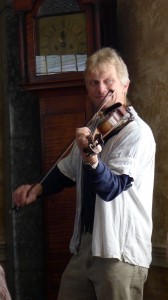 We’re a big band on stage, and we work hard to make life easier for the people running sound at our events. On this page you’ll find information about our preferred setup and copies of our current stage plots.
We’re a big band on stage, and we work hard to make life easier for the people running sound at our events. On this page you’ll find information about our preferred setup and copies of our current stage plots.
If you’re hiring us for a gig and you have concerns about our sound system needs or are unable to meet them, please email us as soon as possible; we’ll be able to work it out together.
Thank you so much for your help! We’re so grateful to the many wise sound engineers who’ve helped us to put our best sonic feet forward, and we look forward to working with you.
Stage Plots | General | Aaron | Hollis | Peter | Viveka
Stage Plots
(click links for printable PDFs of stage plots)
Preferred setup (PDF).
This gives us the most flexibility in choosing sets and making instrument changes.
Listed from stage R to stage L.
Totals:
5 mics on boom stands;
8 XLR inputs w/ phantom;
1 TRS input;
3 monitors with separate mixes
- SM57 + boom stand: bagpipes/whistle/voice (Hollis)
- XLR w/ phantom: flute (Hollis)
- XLR w/ phantom: guitar (Hollis)
- XLR w/ phantom: mandolin (Hollis)
- XLR w/o phantom: fiddle (Peter)
- SM57 + boom stand: low whistle/voice (Peter)
- XLR w/o phantom: fiddle (Viveka)
- SM57 + boom stand: djembe/bodhran drums (Viveka)
- 2 XLRs w/ phantom: concertina (Aaron)
- XLR w/ phantom: banjo (Aaron)
- (for concerts only) SM57 + boom stand: voice (Aaron)
- SM57 + low stand: foot percussion (Aaron)
- TRS: keyboard (Aaron)
- (for dances only) mic + stand: caller
- 3 monitor mixes (Aaron; Viveka + Peter; Hollis) or fewer if you can’t offer that many
Bare minimum setup (PDF).
This is as low as we can go and still be audible. We’ll sound much better with more inputs, but we can survive gigs with this setup.
Listed from stage R to stage L.
Totals:
5 mics on boom stands;
1 XLR input;
1 TRS input;
2 monitors with 1 mix.
- SM57 + boom stand: bagpipes/whistle/flute/mandolin/voice (Hollis)
- XLR w/ phantom: guitar (Hollis)
- SM57 + boom stand: fiddle/low whistle/voice (Peter)
- SM57 + boom stand: fiddle/djembe/bodhran/voice (Viveka)
- SM57 + boom stand: concertina/banjo (Aaron)
- (for concerts only) SM57 + boom stand: voice (Aaron)
- TRS: keyboard (Aaron)
- (for dances only) mic + stand: caller
- 1 monitor mix with 2 monitor speakers
General Requests
We really appreciate it if you set up and cable all the mics and monitors before we take the stage, since we get nervous when cables and mics get tossed around near our instruments. We are happy to help set things up if you prefer; otherwise we’ll set up instruments off-stage and stay out of your way.
Monitors: we prefer to start from nothing in the monitors and then add reinforcement as we need it. When we have multiple monitor mixes, we prefer to start by hearing ourselves in our individual monitors (e.g., piano goes only into Aaron’s monitor; flute goes only into Hollis’s monitor) and then supplement in the other monitors as needed. No caller’s voice in the monitors, please!
Aaron’s setup details
Keyboard: Line-level signal through 1 or 2 TRS cables. Keyboard needs AC power within 6 feet of the keyboard location.
Concertina: Mic-level signal through 2 XLR cables with phantom power. Aaron brings these mics.
Banjo: Mic-level signal through 1 XLR cable with phantom power. Aaron brings this mic.
Feet: One SM57-type mic on a low stand to pick up Aaron’s wooden footboard. Feet are not usually needed in the on-stage monitors. Your mic.
Hollis’s setup details
Flute: Mic-level signal through 1 XLR cable with phantom power. Hollis brings this mic.
Mandolin: Mic-level signal through 1 XLR cable with phantom power. Hollis brings this mic.
Guitar: Mic-level signal through 1 XLR cable, DI box, and 1/4″ guitar cable. Hollis brings his own DI and 1/4″ cable, or he’s happy to use yours.
Bagpipes and Whistle: One SM57-type mic (ideally with switch) on an adjustable boom stand. Your mic.
Please note: we expect and want the bagpipes to be loud. We use them as an effect, and the effect works best when the dancers are in no doubt about what they’re hearing. The pipes shouldn’t be deafening, but it’s okay that they’re very prominent in the mix–they won’t be there for that long.
Hollis can bring a small mixer if needed, which allows him to mute his channels individually. If we’re using that, his channels all condense down to a single XLR channel.
Peter’s setup details
Fiddle: Mic-level signal through 1 XLR cable, preferably without phantom power. Peter brings this mic.
Low Whistle: One SM57-type mic (ideally with windscreen and switch) on a tall boom stand. Your mic.
Viveka’s setup details
Fiddle: Mic-level signal through 1 XLR cable, preferably without phantom power. Viveka brings this mic.
Djembe and Bodhran (drums): One SM57-type mic (ideally with onboard switch) on an adjustable boom stand. Your mic.
Thank you so much! We’re grateful for your help.